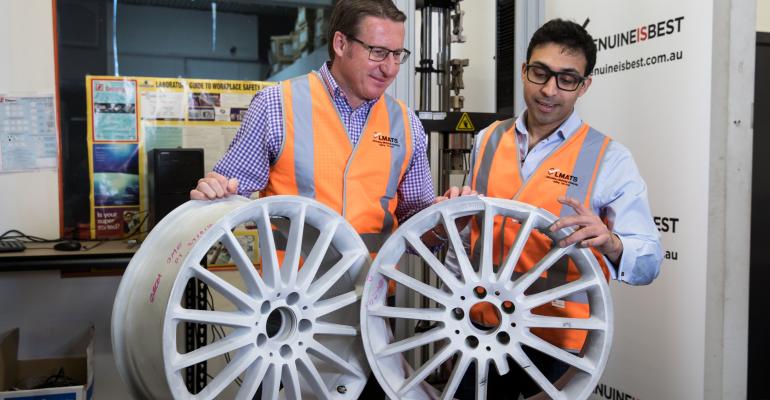An auto-industry group warns counterfeit alloy wheels being sold online in Australia have potentially lethal manufacturing flaws that cause them to crack and fail under normal driving conditions.
The Federal Chamber of Automotive Industries says tests revealed significant defects in the form of pores and cavities visible even to the naked eye.
The FCAI tested the fakes at GM Holden’s proving ground in an industry-standard pothole impact test using Mercedes-Benz alloy wheels as a benchmark.
At just 31 mph (50 km/h), a common speed in much of urban Australia, the fake wheels shattered while the genuine, original equipment wheel easily withstood the impact.
FCAI follow-up laboratory testing and analysis identified faults in the manufacturing process as the likely cause of the failure.
Australian racing driver Mark Skaife, a spokesman for the FCAI’s Genuine Is Best initiative, says the actual and counterfeit wheels look similar, but the proving-ground tests have shown making the wrong choice can have dangerous consequences.
“The fake wheels were sourced from an Australian-based online store, and at first glance you might think you’re getting a great deal,” Skaife says. “But the major concern with fakes is safety, and using them, knowingly or otherwise, means you’re taking a huge risk.”
To understand how and why virtually identical-looking alloy wheels delivered such different results, FCAI sent the fakes to Laboratories for Materials Advanced Testing Services, a team of independently accredited metallurgists, engineers and inspectors.
The analysts discovered significant defects in the fake wheels, including micro and macro porosity, as well as hot tearing – cracks on the surface, subsurface and inside the casting – caused by poor-quality casting and manufacturing processes.
No defects were observed in the genuine wheel.





